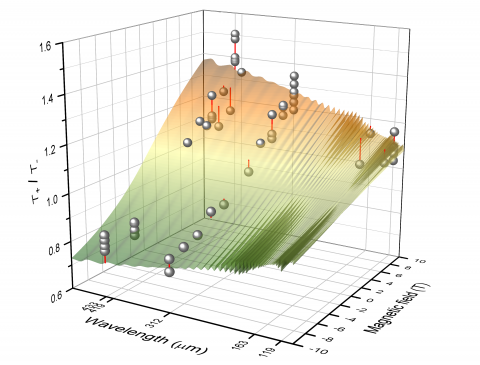|
Abrikosov vortices in superconductors are ideal information carriers: they are topologically stable and keep a uniform nano-scale size given by quantum conditions. Low vortex friction in high-Tc materials makes possible fast motion of quantized vortices with extremely low dissipation of energy. Mastering fast manipulations of vortices will require the knowledge of their mass. Here, we present relevant experiments leading to reliable determination of the vortex mass in the optimally doped YBaCuO, using the observed circular dichroism of far-infrared light. see the paper Mass of Abrikosov vortex in high‑temperature superconductor YBa2Cu3O7−δ R. Tesař, M. Šindler, C. Kadlec, L. Skrbek, P. Lipavský, J. Koláček |
Transmittance ratio T+/T- for the laser lines 119, 163, 312, 419, and 433 μm as a function of magnetic field. The theoretical prediction (colored surface) is compared with experimental values (spheres) observed at a temperature of 45~K. The corrugation of the theoretical surface results from interference in the film/substrate structure. The values observed under identical conditions but in different runs hang on the same vertical line attached to the surface. These repeated measurements demonstrate a spread of the experimental data.
|
|

